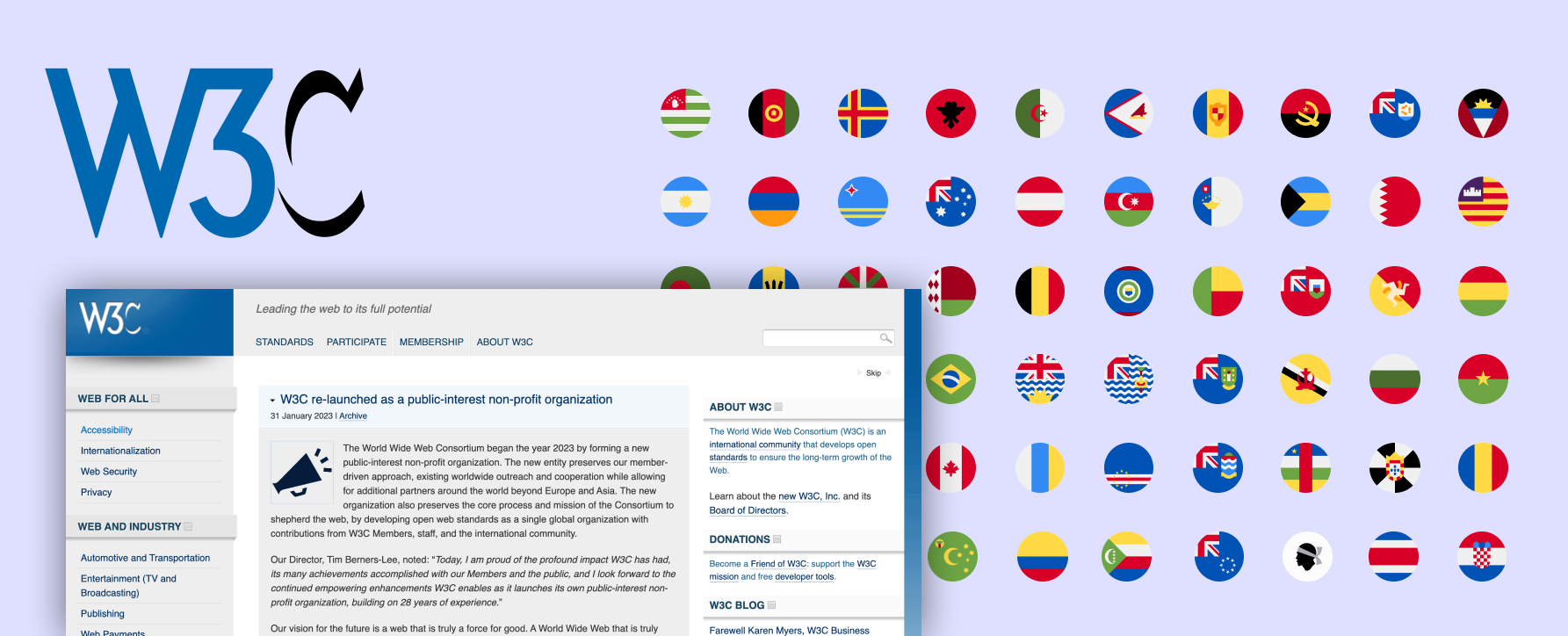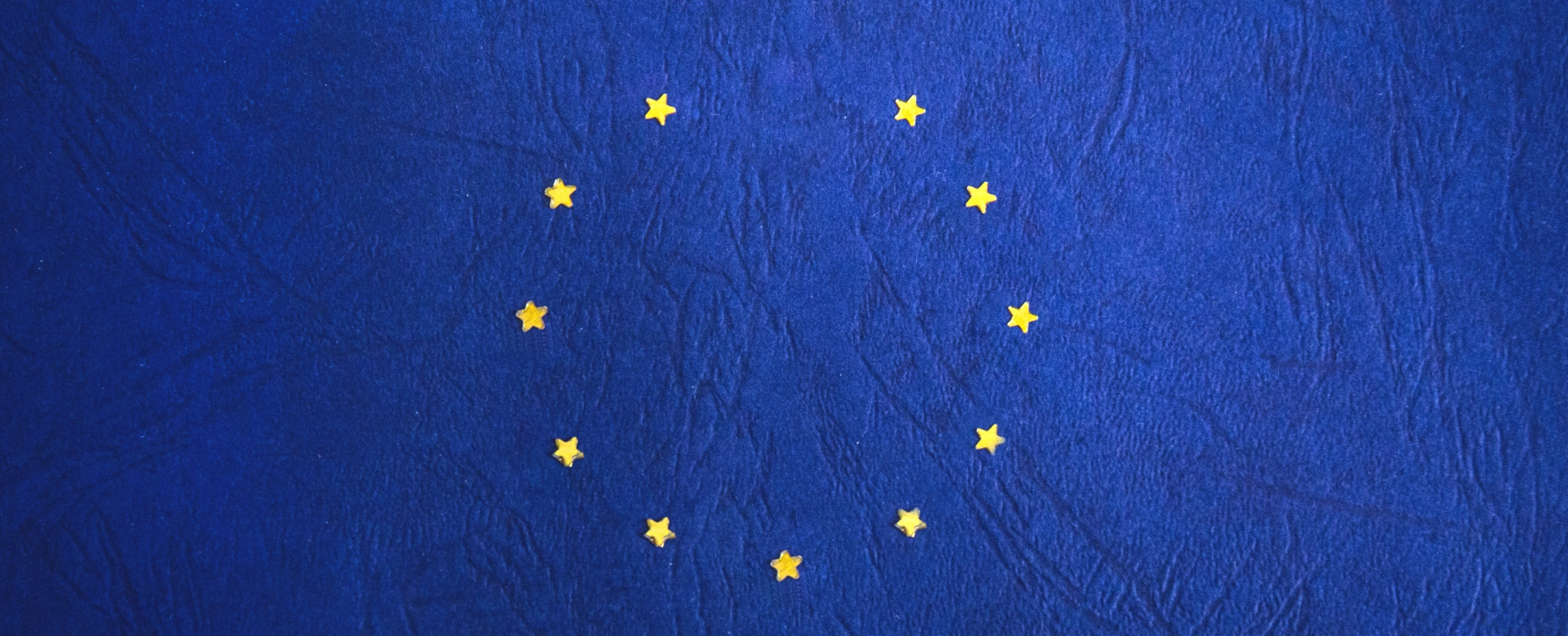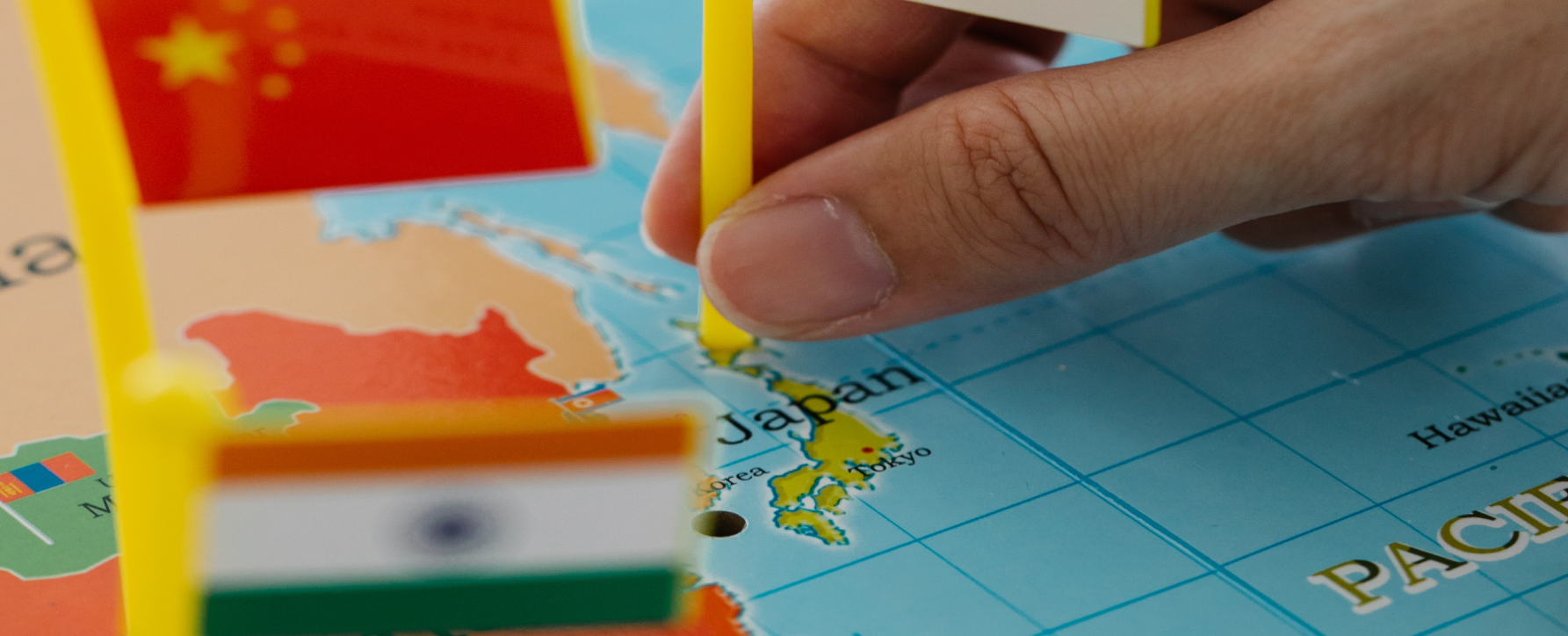The world's web and product accessibility laws, all in one blog
Author's Note
Not every single one of the 195 nations in the world has been included in the below list; rather, as a matter of practicality, this list will focus on large western democracies, particularly those with easy-to-search public records of their laws. The below list is intended as a starting point and overview to the global legal accessibility landscape in February 2023.
Emerging trends in accessibility law
There are two trends I would observe, having compiled the below list of accessibility legislation.
First, the importance of the World Content Accessibility Guidelines [WCAG] as a matter of consensus is extremely clear. Faced with a global challenge which relates to fast-moving technology, it is easier for governments to fall back to the standard set by WCAG should they wish to enforce accessibility online. WCAG is the destination; and businesses should book their tickets early, so to speak, to get the best seats.
Second, there is a general increase in the scope of accessibility laws over time. Particularly important is the European Accessibility Act which will become law in member states in 2025, which extends its scope to private businesses with more than ten employees in some sectors. It is surely no coincidence, then, that there has been a 22% increase in "accessibility" searches year on year, and a 78% increase in job listings between 2020 and 2021, according to UsableNet.
Now is the time to pay attention to the law – it could apply to your business soon, if it does not already.
The WCAG Guidelines as law

The WCAG guidelines: what are they?
The Web Content Accessibility Guidelines [WCAG] are the closest thing we have to an international standard of web accessibility. They will recur frequently throughout this article as many international laws are based on, and others refer explicitly, to WCAG standards.
Who produced WCAG?
The body which has produced the guidelines is called the World Wide Web Consortium [W3C], a member funded organization which was established in 1994 with Tim Berners-Lee at the Massachusetts Institute of Technology. They have worked with national governments and academics to produce the WCAG.
WCAG examines content from four primary perspectives: perceivability, operability, understandability, robustness. There are multiple WCAG ratings, the highest standard being AAA. At the time of writing, the “WCAG 2” is live but a WCAG 3 “working draft” is available to view.
Although the WCAG are the most widely applicable standard, the W3C also publish the User Agent Accessibility Guidelines [UAAG] for tools, browsers, media players, and applications that render web content; and the Authoring Tool Accessibility Guidelines [ATAG] for web developers, designers, and writers, to author web content with.
Working with WCAG
The WCAG forms the basis for accessibility testing with Global App Testing, as our crowdtesters are trained to WCAG standards and can assess WCAG guidelines.
North America

United States
What are the main laws in the US with regards to web accessibility?
- The Americans with Disabilities Act [ADA] was published in 1990 and has since been interpreted to refer to online spaces. Find the law summary here.
- The Rehabilitation Act (1973) was amended in 1998 to include section 508. Find the law summery here.
Who does the ADA apply to?
The ADA applies to all businesses open to the public in addition to state and local governments. You can find some guidance around ADA published on the government website.
However, the law has been criticized for its vagueness. According to one legal consultant, “The Department of Justice is charged with rulemaking to provide clear requirements for compliance of laws. However, in this case, the DOJ has so far abdicated its role.” Their article goes on to recommend WCAG as the de facto standard. The prospect of for-profit lawsuits have crept into the space created by the law’s vagueness in the US.
The Rehabilitation Act
The rehabilitation act is limited in scope to federal agencies and demands disabled people are given the same level of information access on agency websites. Read a summary of the law here
Canada
What are the main laws in Canada with regards to Web Accessibility?
The Canadian Standard on Web Accessibility (2019) requires that Government of Canada websites and web applications conform to WCAG 2.0 level AA. Find the law summary here. Canada does not have laws which apply to businesses at the time of writing.
Individual states
However, some individual Canadian states do. The Ontarians with Disabilities Act (2005) relates to the state of Ontario. Find the law here. This explicitly spells out information & communication accessibility standards and threatens fines of up to $100,000 per day.
Mexico
Are there laws in Mexico on accessibility?
The Mexican law around accessibility is called the General Law for the Inclusion of People with Disabilities (LGIPD). The 2011 law applies to private businesses, it prohibits discrimination . "Authorized telecommunication services" are required to conform to WCAG level AA. Read more here.
The EU

What web accessibility laws apply to EU member states?
- The European Web Accessibility Directive (2016) required member states to make public sector and government websites accessible to the standards unpacked here.
- More recently, the European Accessibility Act (2019) will come into effect in late June 2025. This broadens the scope of accessibility law to some private sector organizations. Some member states are running late with the ratification of this legislation, and the nature of the law gives member states the discretion to enforce and interpret this act in a stricter or more lenient manner.
What kinds of private businesses will be affected by the European Web Accessibility Act
Some private businesses! Specifically, the products and services listed in this press release. Businesses with fewer than ten employees are exempt and there is some scope for member states to opt out of provisions.
Does it relate to WCAG?
According to the European Commission, “The European Accessibility Act…does not impose detailed technical restrictions to make products and services accessible. This allows room for innovation and flexibility.” The transposition of this law by member states may lead to the enforcement of more detailed WCAG regulations for websites by private sector businesses – watch this space.
Germany
As an EU member, Germany is subject to the Web Accessibility act and the European Web Accessibility Directive coming into force in 2025.
Germany is also governed by its national law, the Behindertengleichstellungsgesetz 2002 [BGG] and the later Barrierefreie-Informationstechnik-Verordnung (BITV) 2.0 in 2011.
BGG
The 2002 non-discrimination law (BGG) bans discrimination in general terms and refers to both private and public sector bodies. You can read the law here (German) It does not relate to WCAG, according to the WCAG website.
BITV
BITV requires that government websites align with WCAG 2.0, and you can read it here. (German)
France
As an EU member, France is subject to the Web Accessibility act and will be subject to the the European Web Accessibility Directive.
It is also subject to its national law, the Référentiel Général d'Accessibilité pour les Administrations [RGAA].
What is the RGAA 3 & Article 47
Article 47 of 2005-102 of 11th February 2005 introduces RGAA which is a framework for web accessibility in France. Currently RGAA 3 is the live framework.
Who does it apply to?
- Any business operating in France which earns more than €250 million per year
- Any business operating in France with a website, mobile app, intranet
- Some other categories of business
Does it relate to WCAG?
According to W3, the RGAA is “heavily based on WCAG but differing in structure from WCAG 2”.
Italy
As an EU member, Italy is subject to the Web Accessibility act and the European Web Accessibility Directive coming into force in 2025.
What is the Stanca Act?
The 2004 “Stanca Act” requires that the public sector, plus private businesses where public bodies are shareholders, and service providers for public bodies, adhere to WCAG 2.1, level AA. Read more about the act here
Spain
As an EU member, Italy is subject to the Web Accessibility act and the European Web Accessibility Directive coming into force in 2025.
What is the Spanish law 34 of 2002?
The Spanish law 34 of 2002 refers to public sector organizations and requires that they adhere to Spain’s web accessibility standard, the UNE 139803:2004.
Smaller EU states
According to the European Union Agency for Fundamental Rights, only Austria, Belgium, Malta, and Spain have statutory accessibility requirements for both public and private providers.
In addition to the above countries, Sweden and the EU-adjacent Norway and Switzerland are listed as having relevant anti-discrimination legislation which refers to both the public and the private sector.
Other large countries

United Kingdom
What are the main laws in the UK with regards to Web Accessibility?
The 2010 Equalities Act protects all individuals from unfair treatment from service providers. Based on Sections 20 and 29(7) of the act, website providers are required to make ‘reasonable adjustments’ to accommodate people with disabilities. One legal observer points out this has not been tested in UK courts with regards to website accessibility, yet.
Public sector organizations are required to meet the (Websites and Mobile Applications) Accessibility Regulations 2018. To meet the standard, you will need to meet WCAG 2.1, although there are some circumstances which are exempt. Find more information here.
Japan
What are the main laws in the UK with regards to Web Accessibility?
The Japanese Industrial Standard which relates to accessibility (JIS) X 8341-3, ‘has limited enforcement mechanisms’ but ‘strongly encourages’ private businesses to adhere to similar criteria as WCAG 2.0, according to the bureau of internet accessibility.
The 2013 Elimination of Discrimination against Persons With Disabilities Act (2013) also requires that private businesses report their accessibility practices to authorities or face moderate fines. Read the translated law here.
South Korea
What are laws in South Korea with regards to Web Accessibility?
South Korea passed a 2008 non-discrimination law called The Act on Welfare of Persons with Disabilities. The general law can be interpreted to apply to websites, applies to public and private sectors and is available to read here (in Korean).
The WCAG website describes South Korea’s content accessibility guidelines as “WCAG 2.0 derivative”.
Australia
What are laws in Australia with regards to Web Accessibility?
Australia requires that public sector uses WCAG to an AA standard or higher.
For private companies operating in Australia, the 1992 Disability Discrimination Act requires ‘equal access’ for people with disabilities. It applies to Australian companies and requires them to make reasonable accommodations for employees and customers who have disabilities.
The Australian Human Rights commission, which enforces the law, advises that it uses WCAG 2.0
New Zealand
What are the main laws in New Zealand with regards to Web Accessibility?
The main law in New Zealand is the online standards for web accessibility, which require that websites by public services in New Zealand and their suppliers conform to WCAG AA. Find the law guidance here.
China
China’s 1990 Law on the Protection of Persons with Disabilities was amended in 2008. It bans discrimination against persons with disabilities – it can be found here in English.
China also published the Voluntary Web Accessibility Standard in 2008. As its name implies, this is a voluntary set of web accessibility standards which according to the w3 website is a WCAG 2.0 derivative. Find the standard translated here.
India
Indian government websites should comply with WCAG 2 level A in accordance with the Guidelines for Indian Government websites. Private companies have to comply with the 2016 Rights of Persons with Disabilities Act [RPWD Act] passed in parliament. Service providers must provide “reasonable accommodations”, defined as:
‘Necessary and appropriate modification and adjustments, without imposing a disproportionate or undue burden in a particular case, to ensure persons with disabilities the enjoyment or exercise of rights equally with others.”
Brazil
Brazil passed “The Law for the Inclusion of Persons with Disabilities” in 2015, which you can read here. [Portuguese].
The law applies to businesses with headquarters in Brazil, and refers to WCAG:
According to Article 63, ““Accessibility is mandatory on websites maintained by companies with headquarters or commercial representation in the country or by government bodies, for use by people with disabilities, guaranteeing them access to available information, in accordance with the best practices and accessibility guidelines adopted internationally.” [Source]
Nations with over 110m people
The remaining nations with over 110 million people include Indonesia, Pakistan, Nigeria, Bangladesh, Russia, Mexico, Ethiopia, the Philippines. Significant resources about laws which might be
Conclusion
Of the nations we surveyed, most had some kind of accessibility law and a significant bloc were in the process of transposing one from the EU into their own law.
GDPR made history in 2016. It was the first major law to apply to anybody processing data to external non-subjects of a legislative bloc. It transformed the marketing and compliance landscape for all countries.
There are different categories of subjects here. Some laws apply to government, or public sector bodies and agencies. Some laws apply to their suppliers. Some laws apply to private businesses which are headquartered in a particular country. Some laws apply to private businesses which are operating commercially in the country at all. It seems unlikely that Accessibility Law will lead to enforcement of any business which simply serves a website in a particular locale.
Instead, there is a more coherent and consensus-oriented march towards a global standard.
As more global businesses become WCAG compliant, you should consider checking on the accessibilty standard of your website using Global App Testing.

